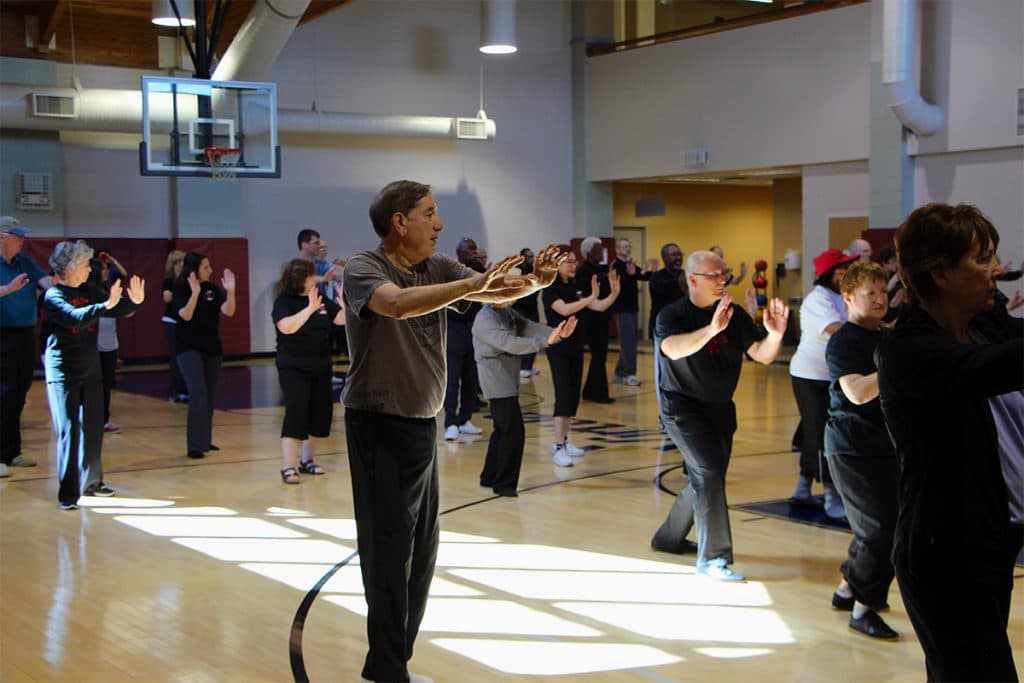Celebrating World Tai Chi Day
The opportunity to participate in World Tai Chi Day was afforded to us here in South Jersey. It was fascinating to observe the many distinct Tai Chi styles that were put on display.
Strength in the muscles, flexibility in the joints, and equilibrium are all improved with Tai Chi practice. It’s possible that the style of Tai Chi you’re practicing incorporates aerobic conditioning, but that really depends on you.
To become an expert at Tai Chi requires many years of practice. The majority of Tai Chi masters claim that even after practicing their form for forty years, they are still able to make improvements to it.
Here Are The Highlights From World Tai Chi Day:
The martial art and health practice is known as tai chi ch’uan was first taught as a form of self-defense. At the beginning of the 20th century, its beneficial effects on health were uncovered, and it began to be regarded as a form of preventative medicine and wellness training.
In later years, the Chinese government encouraged its use in an effort to protect the health of its people. The fact that it was also a good form of exercise eventually overshadowed the martial arts aspects in China.
Tai chi is referred to as the “ultimate low-impact exercise” by Consumer Reports (CR, February 2000, page 45). Tai chi is an exercise that can be performed by anyone who is able to walk; the only restriction is that individuals who have knee problems may have difficulty performing the exercise. According to CR, tai-chi can improve posture, strength, and balance in addition to increasing one’s ability to maintain cardiovascular endurance.
According to CR, a study that was conducted in Australia in 1992 found that it had the same effect on the heart rate, blood pressure, and stress hormones as brisk walking does. Studies have shown that it can reduce blood pressure, make seniors feel more confident, and improve their balance and circulation. Additionally, it can help seniors feel more independent.
“T’ai-chi has come up with the best possible biomechanical scenarios for keeping a person stable,” asserts Dr. Robert Whipple, an expert on gait and balance. These scenarios include “maximizing your standing base by widening your stance” and “keeping your head and torso as vertical as possible.”
(CR, Feb 2000) The techniques that have shown to produce the best results involve taking a wide stance with the feet and holding one’s back and head in an upright position. The way that the head is held in tai chi is described as looking like it is “suspended from above.” There should not be any slouching in any direction, including forwarding, back, or to the side. Read More
Here’s the Enter Shaolin crew hanging out at World Tai Chi Day at Virtua Fitness Center.
It is said that practicing Tai Chi is beneficial for one’s Mind, Body, and Spirit. You should do so wherever and whenever you get the chance.
Who Started World Tai Chi Day?
The year 1999 marked the beginning of the global event. The global event that was inspired by the first event didn’t take place until 1998 when the Kansas City Tai Chi Club staged a big Tai Chi exhibition and teach-in at the Nelson Atkins Museum of Art in midtown Kansas City. The event was inspired by the first event that took place in 1998.
CNN Headline News continued to report on the occurrence in the years that followed, by which time it had swiftly become a topic of national and worldwide interest. It has been designated as World Tai Chi and Qigong Day by the governments of 25 states in the United States of America, as well as the senates of the states of California, New York, and Puerto Rico; the National Council of Deputies of Brazil; and the governments of a number of other nations.
As part of the ongoing medical research into the practice of tai chi, the Harvard Medical School began hosting a lecture series on the topic of Tai chi’s positive effects on one’s health in 2013. The homepage for the Harvard lecture series has the heading “Celebrating World Tai Chi Day.”
In recognition of World Tai Chi Day, the Harvard Medical School Guide to Tai Chi, which was first released in 2012, included the following passage: “The fact that Bill Douglas was able to organize World Tai Chi Day is evidence that the invasion was a complete and total success.
People from all walks of life are encouraged to get together on this day “to unite for the goal of health and healing, as a model for the world,” and do so in celebration of World Health Day. Tai Chi and Qigong Day is an annual event that is celebrated by millions of people in 65 countries across the world.
The purpose of this celebration is to bring attention to the numerous positive effects that these traditional Chinese arts may have on one’s physical and mental health.” Angela Wong and Bill Douglas, co-authors of The Complete Idiot’s Guide to Tai Chi and Qigong, were the ones responsible for launching this international event (Penguin Alpha Books, fourth edition, 2012).
Their book’s inclusion of a section titled “World T’ai Chi and Qigong Day” was an essential component in the process of increasing awareness of this health and wellness celebration in countries all over the globe.
The Enter Shaolin Family






I think it is the “Person” who defines his skills and arts to
any level they believe they can achieve. Believe and you shall fine!
I totally agree! 🙂